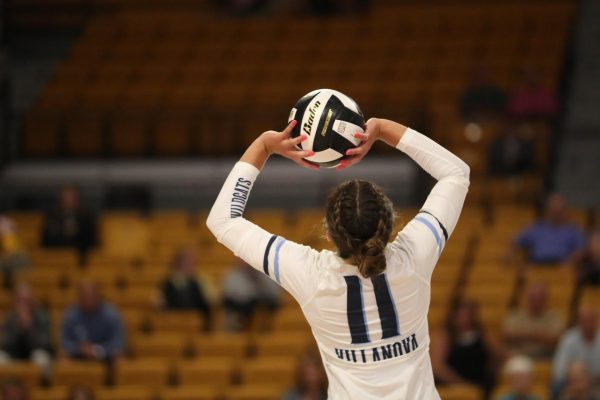University endowment drops 22 percent
October 1, 2009
Despite a 22 percent decrease in Villanova’s endowment, from June 30, 2008 to June 30, 2009, the University does not plan to curtail any endowment-funded academic programs, has increased financial aid and will continue campus construction as planned.
The 5 percent annual return the endowment earns makes up only 4 percent of the operating budget. The University’s endowment is composed of stocks, bonds and some real estate holdings. Since the endowment funds such a small proportion of the overall budget, and the University budget is largely tuition-dependent, the school has seemingly weathered the financial downturn better than other universities, according to Ken Valosky, vice president for Administration and Finance.
The fact that the University does not rely heavily on income from its endowment brings both advantages and disadvantages. While the decrease in the value of the endowment has had no major short-term impact on the University, the effects of the downturn are problematic in other ways.
“For us it’s been more of an inconvenience than anything else,” Valosky said. “While the stock market has been of great interest to people, what happened in the credit markets is of greater importance to us. For us the concern is people’s ability to borrow. Most of our attention is drawn to the economic impact on our families.”
As a result, the University has made more of a commitment to recruitment and retention of returning students.
The University had its smallest tuition increase in years and raised financial aid by 9 percent in an attempt to help students during the economic downturn. In the past year, the University has also increased financial aid in spite of its losses and plans to continue to increase aid at a rate that is higher than the rate of increase in tuition, according to Valosky.
Villanova has continued to start new projects and offer aid to students so they can continue to afford higher education, while other universities have been forced to cut programs more drastically.
Harvard University, which funds approximately 33 percent of its budget through endowment support and experienced a 30 percent decline, equivalent to over $10 billion, has recently cut endowment-funded programs in arts and sciences by 15 percent, according to the National Association of College and University Business Officers.
“Villanova’s financial discipline can be seen in its efficient operations,” Valosky said. “This operating performance resulted in the building of cash reserves that have allowed us to continue moving forward with construction projects and providing additional financial aid for our students.”
However, the University is not completely immune to the impact of stock market changes.
“While Villanova is not as dependent on endowment support as other universities, we obviously do not like to see the endowment decline,” Valosky said.
Although the University has been able to minimize the effects of the loss of over one-fifth of its endowment, there have been both short- and long-term impacts on the University.
In the short-term, all departments have given back 5 percent of their non-salary, operating expense budgets for 2010-’11; for fiscal year 2010, there were no salary increases for faculty and staff and the hiring freeze continues. However, employees with salaries below $60,000 received a $1,500 one-time cash payment.
In the long-term, there needs to be a capital campaign, as the endowment is not expected to recoup all its losses solely from stock market gains. The University will seek additional donations, and the endowment will eventually bounce back, according to Valosky.
In reacting to its losses, the University has kept two goals in mind: both to assess the economy’s impact on students and families and to avoid layoffs. The University plans to refinance existing debt to take advantage of historically low interest rates. The campus master plan is still moving forward, though slowly. No major construction projects have been put on hold, such as the renovation of Sullivan Hall and Sheehan Hall which will commence over the next two summers.
“As a result of our financial discipline, we have always lived within our means and built up ample cash reserves,” Valosky said. “The master plan can be tailored to economic conditions.”
The renovation of student amenities are receiving priority over repairs to academic facilities.
“We made a conscious decision to start with residence halls,” Valosky said.
Approximately 4 percent of the value lost to the University’s investments has been recovered since June. The value of the endowment, which was $266.7 million at the end of June, had increased to $280.2 million by August, meaning that the worst is over in terms of losses, according to Valosky.
“While there is bound to be some volatility in the short-term, we won’t see the stock market lows – we are past the lows,” Valosky said. “These things are cyclical in nature. It will come back over time. We will get there.”
Peter Batista and Meredith Davisson contributed reporting to this article.












